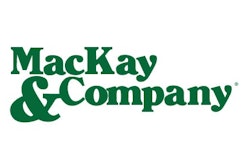
[This article was originally published in 2019 by Trucks, Parts, Service. It has been updated to include more timely information.]
Any business owner who has so much as attempted a data integration project understands the concept of data overload. While nearly all data has value, in many industries, including trucking, the amount of actionable data available to businesses often far exceeds the amount of data any one business can realistically use within its operation.
This overabundance of information therefore requires businesses and their leadership to be careful and measured in their approach to data implementation. Acquiring too much data can drown a business in information, while acquiring too little, or the wrong data to fit one’s needs, can result in the investment of time and resources ultimately becoming a fruitless endeavor. And that’s something no business owner wants or can afford.
In Part II of our three-part series on data integration, TPS investigates best practices for business owners and executives when evaluating data sources to incorporate into a business.
Though Part I of our special report dove deep in chronicling the number of data sources feeding the dealer and aftermarket channels, TPS starts this month’s feature on data evaluation with a step backward. Because when it comes to data implementation, the best integration plans all begin in the same place: inside one’s business.
Any dealer or independent aftermarket business contemplating a data acquisition project must first define its wants, needs and goals. A good first step in that direction comes through the answering of a couple important questions: What are you trying to do, and what are you trying to learn?
Part II: Data evaluation
What do you want to do?
“I think dealers, suppliers and the aftermarket have always under-stood they needed to know what was happening in their business, but now they’re becoming more aware of the importance of understanding the broader marketplace. The entire industry,” says Eric Starks, president, FTR Transportation Intelligence.
Yet acknowledging that task and knowing how to do it isn’t easy. Starks says sometimes he interacts with business owners who don’t even know where to start.
“Big data is this big sexy topic but that can mean a lot of things. If you weren’t using data before, why would you want to use it now? You have to understand the data you need and how you can use it,” he says.
In the dealer and aftermarket channels, data is most often used to accomplish three primary goals: sell more products and services, evaluate market position and increase business efficiency. At a glance those goals may seem similar, at least interconnected, but when approached using data it becomes clear that each objective requires a different information stream.
Before undergoing any data acquisition and implementation project, business owners should first determine exactly which goal they intend to aim for and how they intend to achieve it. This requires careful business planning and strategy.
For example, a goal to raise sales by 10 percent in a single quarter is nearly too broad to be actionable. Does that mean 10 percent of net sales or gross sales? And sales of what? Parts, service or equipment? If it is parts, which categories and product lines offer the most growth potential? And which existing customers are most likely to add those lines? Or, should the focus be on generating new customers?
Data sources exist to answer all those questions, but it’s only after they are posed that those sources can be identified.
[RELATED: Proper steps to integrate data into a truck dealer or aftermarket business]
“Everyone wants to be able to [acquire] as much information as they can consume, but I think sometimes doing that gives you too much information,” says Paul Moszak, vice president and heavy-duty evangelist, MOTOR. “If you’re going to go out and get data, you need to know how to use it and what you want to do with it.”
“You need to be able to come up with the questions that data will be able to help you answer,” adds Adam Madsen, Karmak vice president of business solutions.
Once a business has determined why it seeks and values data, it can begin the process of evaluating available sources to find the right information for its business. Regardless of a company’s business goal, all data should be evaluated against three questions.
Is it relevant?
Due to the multitude of data sources found in the trucking industry, starting with a screening question regarding relevancy when evaluating data is a good way for business owners and executives to eliminate ancillary data and focus on the specific information that will truly benefit their operation.
A company’s aforementioned goal or endgame also has a strong influence on the relevance of any data set. A distributor seeking to raise sales revenue among existing customers would have little use for a list of carrier prospects, yet the latter could be incredibly useful for that same distributor if its sales objectives expand to converting new leads.
Additionally, there are several data sources that can prove valuable inputs into to multiple business objectives. Brittany Soika says that’s something she’s learned firsthand while mining data sources to support strategically focused sales planning as Excel Truck Group director of business development.
“Once you fully understand, and become comfortable with various data sources, it can be used to get very surgical and focused in the planning process,” she says.
There’s also the matter of timeliness. The climate of the trucking industry changes rapidly. Data that was valuable in the first quarter might not be the best indicator of business opportunities in the fourth quarter. Taking a moment to ensure a data set has value in the present and immediate future can save significant headaches during future implementation steps.
Chris Brady, president, Commercial Motor Vehicle Consulting, says that’s something he focuses on when promoting his company’s aftermarket parts index. Developed as a market indicator, Brady says his index was designed to provide immediate insights on the next three to six months in the aftermarket and is most valuable when used as such. “I think our index gives businesses a flashing light of what may be coming,” he says.
Does it provide clarity?
This is a big one, particularly in the dealer and aftermarket channels, where most businesses lack the resources to devote to data science and analysis.
Any data being considered for acquisition must be concise and understandable to someone who isn’t a data professional by trade so it can be efficiently integrated into a business plan.
Fortunately, this requirement hasn’t been overlooked by the trucking industry’s data providers. Many industry research firms and data providers employ customer service professionals to help translate mountains of raw data into easily digestible packages of content.
“There’s enough data out there today for you to get lost in it,” says Adam Morrison, senior client success manager, Randall-Reilly — publisher of TPS and owner of Rig-Dig Business Intelligence. “One thing we try to do is act as a translator and show the client how the data works.”
Adds Randall-Reilly Data Analyst Laura Hoover, “We want our cli-ents to think of us as their outsourced analytics team.”
And clarity doesn’t just refer to how data is understood, but also how it illuminates answers to the questions posed by a company’s business objectives. Data should serve as a solution; it shouldn’t produce more difficult questions.
But it’s also imperative to recognize that not all data that is easy to understand is a worth-while acquisition target. Customer base, market position and business objectives should define a data source’s value, not accessibility. As an example, on-highway vehicle maintenance data is easy to understand, but it won’t help sell suspension parts in an oil field. Strong data is as useful as it is digestible.
Is it actionable?
Though this question is likely to be posed throughout any data evaluation, experts say it still de-serves special attention once potential sources have been vetted. The investment required to procure quality data demands it.
Most data is actionable one of two ways — either as standalone insight (into a market, customer or business) or as complementary information that supports, confirms or refutes other (internal or external) data sources.
Jim Meil, principal, industry analyst, ACT Research, says one good way to gauge the actionable potential of any data source is to imagine it in the hands of a rival.
“If you’re not using it, would it be a competitive advantage for another player?” he asks.
It’s important to note here that business owners and executives don’t have to make this evaluation alone. Similar to their aforementioned efforts to produce simple, digestible information, many data solutions providers also will work with clients to create customizable data sets, while others employ liaisons to answer questions and educate customers about their data products.
“With the mountains of data available today, organizing it and presenting it in a way that is useful is very important,” says Mike Mallory, president, AutoPower. “We want our product to be comprehensive, but we also want to present our information in a way that [customers] can understand it and actually use it every day.”
“We will provide as much training as a customer requests,” adds John Blodgett, vice president, sales and marketing, MacKay & Company. “The last thing we want is to have the information sitting on the corner of their desk not being used.”
Part III of our series investigates best practices for implementing data into a dealer or aftermarket operation and can be found HERE.











